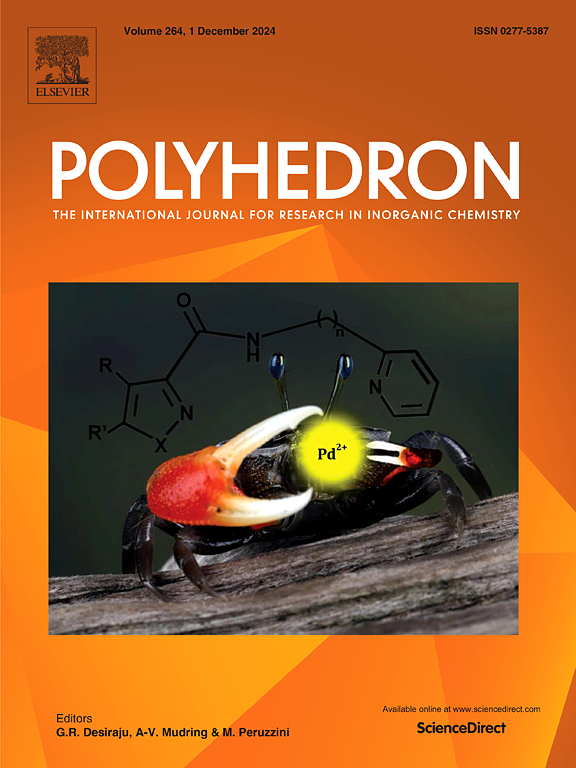Synthesis and characterizations of a phenolato coordinate gallium(III) porphyrin: A metalloporphyrin with stabilized axial ligand bonding
IF 2.4
3区 化学
Q2 CHEMISTRY, INORGANIC & NUCLEAR
引用次数: 0
Abstract
To obtain stable metal–ligand bonding in metalloporphyrins, a phenolato-coordinated gallium(III) porphyrin (Ga3+Por) was designed, synthesized, and characterized. The strategy behind this chemistry is that the hard acid Ga3+ forms a stable bond with the hard base phenolato, PhO−. The title complex was synthesized through a dehydration reaction between phenol and the hydroxo complex of Ga3+Por. The stability of the Ga-O coordination bond facilitates the detection of the parent ion signal in atmospheric pressure chemical ionization mass spectrometry, as well as in conventional experimental techniques, such as recrystallization from a hot solvent under ambient conditions. Single-crystal diffraction studies revealed that the coordination geometry of the ligand resulted in a five-coordinate Ga3+Por. In addition to the usual spectroscopic studies, including absorption and emission spectra, electrochemical analyses were also performed. The positively shifted oxidation potential can be explained by the incorporation of gallium, which has an insufficient shielding effect because of its filled d-electrons.

求助全文
约1分钟内获得全文
求助全文
来源期刊

Polyhedron
化学-晶体学
CiteScore
4.90
自引率
7.70%
发文量
515
审稿时长
2 months
期刊介绍:
Polyhedron publishes original, fundamental, experimental and theoretical work of the highest quality in all the major areas of inorganic chemistry. This includes synthetic chemistry, coordination chemistry, organometallic chemistry, bioinorganic chemistry, and solid-state and materials chemistry.
Papers should be significant pieces of work, and all new compounds must be appropriately characterized. The inclusion of single-crystal X-ray structural data is strongly encouraged, but papers reporting only the X-ray structure determination of a single compound will usually not be considered. Papers on solid-state or materials chemistry will be expected to have a significant molecular chemistry component (such as the synthesis and characterization of the molecular precursors and/or a systematic study of the use of different precursors or reaction conditions) or demonstrate a cutting-edge application (for example inorganic materials for energy applications). Papers dealing only with stability constants are not considered.
 求助内容:
求助内容: 应助结果提醒方式:
应助结果提醒方式:


